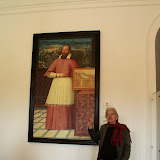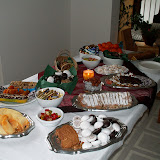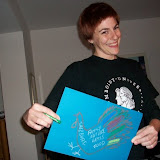 |
| Hellbrunn Excursion |
On Friday October 30, several Bowling Green students went on an excursion for the undergraduate Art History course to the Palace of Hellbrunn on the south side of the city. Built between 1613 and 1619 by Prince-Archbishop Markus Sittikus, the palace is a mix between late Renaissance and early Baroque architecture, as evidenced by the unimpressive, straight staircase leading to the second floor. In the Baroque period, staircases were centrally located and grand, often having two symmetrical winding sets of steps leading to a large balcony on the second floor. The function of such staircases was to greet incoming guests with ceremony while showing the owner’s wealth.
Hellbrunn is considered a “Lustschloss” (pleasure palace) and was used as a summer getaway for the archbishop of Salzburg to get out of the hot city. Used solely as a day palace, there are no bedrooms for the guests who came to use the grounds for hunting, the favorite pastime of the archbishop. His love of animals can be seen in the many paintings, statues and fountains within the complex, as well as in the zoo he built to keep his exotic pets, which is still in use today.
Hellbrunn, which means “bright spring” in German, is most famous for the "Wasserspiele" (water games) or trick fountains that can be found throughout the grounds. The waterworks at Hellbrunn are unique in that they are the only examples of their kind to be in continuous use since their creation over 400 years ago. Though it was a cold and cloudy day, we were thrilled to see the fountains in action. Next time, though, I am taking an umbrella.
By: Rebecca Arjev




No comments:
Post a Comment